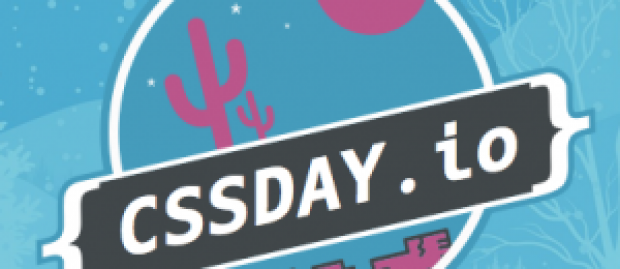
Yesterday I attended CSSDay at the Infusionsoft offices in Chandler, Arizona. It was an all day event focused on intermediate and advanced CSS topics. The conference was lead by Brad Westfall and attracted nearly 300 attendees from the Phoenix area and beyond. I would like to share my takeaways from the event.
The Big Picture
I know my fair share of CSS and am comfortable using the browser developer tools to inspect, tweak and debug to my heart’s content. I was unsure if attending the conference would have value.
My biggest point is that you don’t know it all. It is good to go out into your field of peers with an open mind to learn new tips and keep relationships strong. Even if you pickup one good idea from attending, your time is well spent. I was able to spend time with out friends and new people who I barely knew. Each interaction had value.
This conference brought in national speakers. Hearing what the larger community outside of your city is doing can open your eyes to new ideas and also confirm that many of the issues you see are universal.
Specifically with technologies like CSS, you can learn enough to be proficient, perhaps even to an expert level, but the technology is always improving. It is easy to become complacent with your skills. Attending events with advanced users like CSSDay is a way to remind you that the industry has been moving forward while you were busy in your day to day grind.
Specific CSS Tips from the Event
Frameworks
We all love frameworks for their ability to make hard stuff easy for us. The downside is that you may only use 5% of the framework that you have included. What about the other 95%? The browser still has to load it. This is why many frameworks are criticized for bloat.
A theme among the presenters was to not be afraid of customizing frameworks for your needs. You get all of the benefit of well tested code and the ability to strip out the parts that you don’t need. This greatly appeals to developers who are accustomed to writing things from scratch.
I agree if you do it with your eyes wide open. There is a downside to customizing a framework — you now need to maintain the code as if it is your own. This means when the upstream source releases updates, it will become your job to merge the good parts of the update into your customized version. A case by case choice will have to be made on whether forking the upstream files yields sufficient benefits for your case. I would say for common files that don’t change much like normalize.css it won’t be much of a headache. For larger projects like bootstrap, be more cautious.
Set Good Defaults
Certain HTML tags such as ul have their intended purpose for lists but also get used in many more creative ways such as portfolio layouts, tabs and navigation menus. Set the default style to be the most commonly used style (padding-left:0; list-style:none) and then override only when needed. This will prevent having to duplicate yourself each time that you want the common use of the tag.
Selector Support in Browsers has Improved
Selectors are the basis for css. Selecting tags, classes, IDs, and even descendants (eg: .content h3) are so common that we no longer think about them. Do you know what >, +, and * do? Using child selectors to only select the direct descendant or the adjacent selector can quickly up your CSS game.
The lobotomized owl is one such selector pattern that you are sure to see more of.
Tutsplus has a great summary of CSS selectors to refresh your memory.
Animations Add to the User Experience
The judicious application of animations to your website can vastly improve the user experience. No longer is your website a static page but something that the user can interact with. I’m not talking about cartoon animations. Adding a quick half second easing of a color, image, button, or moving element on a page will make it feel more natural. Of course it is hard to account for taste. Generally, don’t make too much of the page bounce and if your transitions have a long duration, the page will feel sluggish.
Conclusion
Brad Westfall, the volunteers, and the sponsors all worked together to create an excellent event. It is no small undertaking to create a 300 person conference with a national presence. Breaking out of your comfort zone, networking and learning by attending such an event is a valuable way to supplement your trade skills and business.
